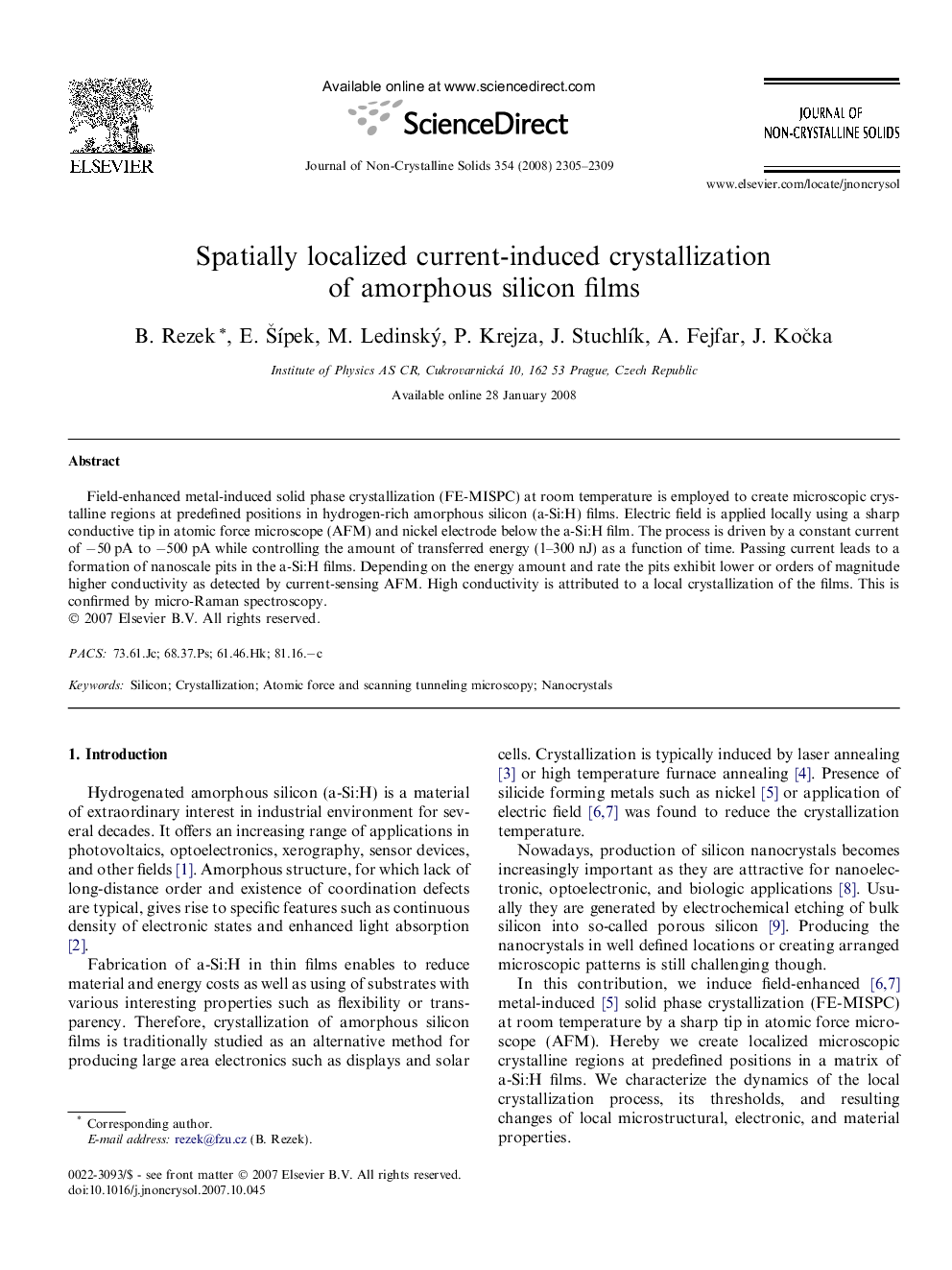| Article ID | Journal | Published Year | Pages | File Type |
|---|---|---|---|---|
| 1484690 | Journal of Non-Crystalline Solids | 2008 | 5 Pages |
Field-enhanced metal-induced solid phase crystallization (FE-MISPC) at room temperature is employed to create microscopic crystalline regions at predefined positions in hydrogen-rich amorphous silicon (a-Si:H) films. Electric field is applied locally using a sharp conductive tip in atomic force microscope (AFM) and nickel electrode below the a-Si:H film. The process is driven by a constant current of −50 pA to −500 pA while controlling the amount of transferred energy (1–300 nJ) as a function of time. Passing current leads to a formation of nanoscale pits in the a-Si:H films. Depending on the energy amount and rate the pits exhibit lower or orders of magnitude higher conductivity as detected by current-sensing AFM. High conductivity is attributed to a local crystallization of the films. This is confirmed by micro-Raman spectroscopy.
